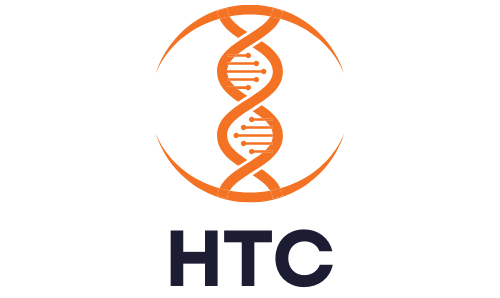Cybersecurity in Healthcare: Protecting Investments
In an era where digital transformation is reshaping industries, healthcare stands at the forefront, leveraging technology to enhance patient care and streamline operations. However, with this digital evolution comes a heightened risk of cyber threats, making cybersecurity an essential consideration for healthcare organizations and investors alike. The increasing importance of cybersecurity in healthcare cannot be overstated, as breaches and data leaks not only compromise patient confidentiality but also pose significant financial risks.
Robust cybersecurity measures are vital in safeguarding investments in HealthTech. As healthcare systems integrate advanced technologies such as electronic health records (EHRs), telemedicine platforms, and connected medical devices, the potential for cyber attacks grows. Protecting these technologies and the sensitive data they handle is critical for maintaining investor confidence and ensuring the sustainability of healthcare innovations.
The purpose of this blog is to explore the intricate relationship between cybersecurity and healthcare investments. We will delve into how effective cybersecurity strategies can protect investments, the financial implications of data breaches, and the measures organizations can implement to mitigate risks. By understanding the impact of cybersecurity on healthcare investments, stakeholders can make informed decisions and foster a more secure, resilient HealthTech landscape.
The Importance of Cybersecurity in Healthcare
Cybersecurity is critical in healthcare for several compelling reasons. Firstly, healthcare organizations handle vast amounts of sensitive data, ranging from patient records and financial information to proprietary research. This data is invaluable, not just to the patients and organizations that generate it, but also to cybercriminals who seek to exploit it for financial gain or malicious intent. The stakes are incredibly high, as any compromise can have dire consequences for individuals and institutions alike.
Types of Sensitive Data at Risk
- Patient Records: These include personal identification information (PII), medical histories, test results, treatment plans, and prescription details. Unauthorized access to this data can lead to identity theft, insurance fraud, and a loss of patient trust.
- Financial Information: This encompasses billing details, credit card numbers, bank account information, and insurance claims. Breaches in this data can result in significant financial theft and fraud.
- Proprietary Research: HealthTech companies often engage in cutting-edge research and development, producing valuable intellectual property and trade secrets. Unauthorized access or theft of this information can derail research projects, diminish competitive advantage, and lead to financial losses.
The Potential Consequences of Data Breaches
- Financial Loss: Data breaches can lead to substantial financial losses due to the cost of breach mitigation, legal fees, compensation to affected individuals, and lost revenue. HealthTech companies may also face increased insurance premiums and a decline in stock value.
- Reputational Damage: Trust is a cornerstone of the healthcare industry. A data breach can severely damage an organization's reputation, leading to a loss of patients, clients, and partners. Rebuilding trust after a breach can take years and require significant investment in public relations and security measures.
- Regulatory Penalties: Healthcare organizations are subject to strict regulations, such as the Health Insurance Portability and Accountability Act (HIPAA) in the United States. Non-compliance due to a data breach can result in hefty fines and sanctions. Additionally, regulatory bodies may impose stringent corrective actions, increasing operational burdens.
In conclusion, the importance of cybersecurity in healthcare cannot be underestimated. Protecting sensitive data not only safeguards patients and proprietary information but also ensures the financial and reputational stability of healthcare organizations. As the digital landscape continues to evolve, robust cybersecurity measures are essential in maintaining the integrity and trustworthiness of the healthcare sector. This blog will further explore how cybersecurity impacts healthcare investments and the strategies that can be employed to mitigate these risks.
Cybersecurity Threats in Healthcare
Healthcare organizations face a myriad of cybersecurity threats that can compromise sensitive data and disrupt critical operations. Understanding these threats is essential for implementing effective defenses. Here are some of the most common cybersecurity threats in the healthcare sector:
Common Cybersecurity Threats
- Ransomware: Ransomware attacks involve malicious software that encrypts an organization's data, rendering it inaccessible until a ransom is paid. Healthcare organizations are prime targets due to the critical nature of their data. These attacks can halt operations, delay patient care, and incur significant financial costs.
- Phishing: Phishing attacks involve deceptive emails or messages designed to trick individuals into providing sensitive information or downloading malicious software. These attacks can lead to unauthorized access to patient records, financial information, and other critical data.
- Insider Threats: Insider threats come from within the organization and can be intentional or accidental. Employees with access to sensitive data may misuse it for personal gain or inadvertently expose it through negligence. Insider threats are particularly challenging to detect and prevent.
Real-World Examples of Cyber Attacks on Healthcare Institutions
- WannaCry Attack on the NHS (2017): The WannaCry ransomware attack affected over 200,000 computers across 150 countries, with the UK's National Health Service (NHS) being one of the hardest hit. The attack disrupted medical services, led to the cancellation of thousands of appointments, and cost the NHS an estimated £92 million.
- Anthem Inc. Data Breach (2015): Anthem, one of the largest health insurance companies in the United States, experienced a data breach that exposed the personal information of nearly 79 million people. The breach included names, social security numbers, addresses, and employment information. Anthem paid $115 million to settle the resulting lawsuits.
- Universal Health Services (UHS) Ransomware Attack (2020): UHS, a major healthcare provider with over 400 facilities, was hit by a ransomware attack that disrupted its IT systems for several weeks. The attack forced the company to revert to manual processes, delaying patient care and costing an estimated $67 million in recovery expenses.
Emerging Threats and the Evolving Landscape of Cyber Risks
The cybersecurity landscape is constantly evolving, with new threats emerging as technology advances. Some of the emerging threats in the healthcare sector include:
- Internet of Medical Things (IoMT): The increasing use of connected medical devices, such as pacemakers and insulin pumps, introduces new vulnerabilities. These devices can be exploited to gain access to larger healthcare networks or to manipulate medical data and functions.
- Artificial Intelligence (AI) and Machine Learning (ML) Attacks: As healthcare organizations adopt AI and ML for diagnostics and treatment planning, attackers are developing methods to exploit these technologies. Adversarial attacks can manipulate AI algorithms, leading to incorrect diagnoses or treatment recommendations.
- Supply Chain Attacks: Healthcare organizations rely on a vast network of suppliers and vendors for medical equipment, software, and services. Cybercriminals can target these third parties to gain access to healthcare networks, introducing vulnerabilities through compromised products or services.
Impact on HealthTech Investments
The impact of cybersecurity incidents on HealthTech companies can be profound, affecting not only their operations but also their market valuation and attractiveness to investors. Understanding these effects is crucial for both investors and companies operating in the healthcare technology space.
How Cybersecurity Incidents Can Affect HealthTech Companies and Their Valuation
- Financial Losses: Cybersecurity breaches often result in significant financial losses due to the costs of mitigating the breach, legal fees, regulatory fines, and compensation to affected parties. These expenses can severely impact a company's financial health and reduce its valuation.
- Reputational Damage: A cybersecurity incident can tarnish a HealthTech company's reputation, leading to a loss of trust among patients, clients, and partners. This loss of confidence can result in decreased revenue and a decline in stock prices, further lowering the company's market value.
- Operational Disruption: Cyber attacks can disrupt the daily operations of HealthTech companies, causing delays in research and development, interruptions in patient care, and loss of critical data. Such disruptions can hinder the company's growth prospects and long-term success.
- Regulatory Compliance Issues: HealthTech companies are subject to strict regulatory requirements regarding data protection. A cybersecurity breach can lead to non-compliance, resulting in hefty fines and increased scrutiny from regulatory bodies. This can negatively affect the company's valuation and investment appeal.
The Importance of Cybersecurity Due Diligence in the Investment Process
Investors must conduct thorough cybersecurity due diligence when evaluating HealthTech companies. This involves assessing the company's cybersecurity posture, policies, and practices to ensure they are robust enough to protect sensitive data and maintain operational integrity. Key aspects of cybersecurity due diligence include:
- Security Frameworks and Policies: Investors should review the company's cybersecurity frameworks, policies, and procedures to ensure they align with industry standards and best practices.
- Incident Response Plans: Assessing the company's incident response plans is crucial to determine how well-prepared they are to handle potential cyber threats and breaches.
- Employee Training and Awareness: Evaluating the company's efforts to train employees on cybersecurity best practices can provide insights into their commitment to minimizing human error, a common cause of breaches.
- Third-Party Risk Management: Investors should examine how the company manages cybersecurity risks associated with third-party vendors and partners, as these can be potential entry points for cyber attacks.
Case Studies of Investments Impacted by Cybersecurity Breaches
- Merck & Co. (2017 NotPetya Attack): The pharmaceutical giant Merck & Co. suffered a major cybersecurity breach due to the NotPetya ransomware attack. The incident disrupted manufacturing operations and led to losses exceeding $1.3 billion. The breach not only affected Merck's financials but also raised concerns about its cybersecurity readiness, impacting investor confidence.
- Equifax (2017 Data Breach): Although not a HealthTech company, the Equifax data breach serves as a pertinent example. The breach exposed the personal information of 147 million people and resulted in a $700 million settlement with regulators. The company's stock price plummeted, and investor confidence was severely shaken, highlighting the significant financial and reputational damage that can result from a cybersecurity incident.
- LabCorp (2019 Data Breach): LabCorp, a leading clinical laboratory company, experienced a data breach that exposed the personal and financial information of millions of patients. The breach led to increased regulatory scrutiny, legal battles, and a decline in stock value. The incident underscored the importance of robust cybersecurity measures in maintaining investor trust and protecting company valuation.
Best Practices for Enhancing Cybersecurity
To effectively protect sensitive data and maintain the trust of patients and investors, healthcare organizations must implement robust cybersecurity measures. Here are some essential practices that can help enhance cybersecurity in the healthcare sector:
Essential Cybersecurity Measures for Healthcare Organizations
- Encryption: Encrypting sensitive data, both in transit and at rest, is crucial for protecting it from unauthorized access. Encryption ensures that even if data is intercepted or stolen, it remains unreadable without the proper decryption key.
- Multi-Factor Authentication (MFA): Implementing MFA adds an extra layer of security by requiring users to provide multiple forms of verification before accessing sensitive systems and data. This can significantly reduce the risk of unauthorized access, even if login credentials are compromised.
- Regular Audits and Assessments: Conducting regular cybersecurity audits and vulnerability assessments helps identify and address potential weaknesses in the organization's security posture. These audits should be thorough and include both internal and external assessments to ensure comprehensive protection.
- Access Controls: Implementing strict access controls ensures that only authorized personnel can access sensitive data and systems. This includes using role-based access controls (RBAC) to limit access based on job functions and responsibilities.
- Data Backup and Recovery Plans: Regularly backing up data and having a robust recovery plan in place is essential for minimizing the impact of ransomware attacks and other data loss incidents. Backups should be stored securely and tested periodically to ensure they can be restored quickly when needed.
The Role of Employee Training and Awareness Programs
Employees are often the first line of defense against cyber threats. Therefore, investing in comprehensive training and awareness programs is essential for minimizing human error and enhancing overall cybersecurity. Key components of effective training programs include:
- Regular Training Sessions: Conducting regular training sessions on cybersecurity best practices, such as recognizing phishing attempts, safe internet usage, and the importance of strong passwords, helps keep employees informed and vigilant.
- Simulated Phishing Attacks: Running simulated phishing attacks can help employees practice identifying and responding to phishing attempts in a controlled environment. This helps reinforce training and improve employees' ability to recognize real threats.
- Incident Response Drills: Conducting regular incident response drills ensures that employees are familiar with the organization's response procedures in the event of a cyber attack. These drills help identify potential gaps in the response plan and improve overall preparedness.
- Security Awareness Campaigns: Implementing ongoing security awareness campaigns, such as posters, emails, and interactive sessions, helps keep cybersecurity top of mind for employees. These campaigns should highlight current threats and reinforce best practices.
Importance of Staying Updated with the Latest Cybersecurity Technologies and Practices
The cybersecurity landscape is constantly evolving, with new threats and technologies emerging regularly. Healthcare organizations must stay updated with the latest developments to ensure they are adequately protected. Key strategies include:
- Continuous Learning and Adaptation: Organizations should invest in continuous learning and professional development for their IT and cybersecurity staff. This includes attending industry conferences, participating in webinars, and obtaining relevant certifications.
- Collaboration with Cybersecurity Experts: Partnering with cybersecurity experts and consultants can provide valuable insights and guidance on implementing the latest security measures and addressing emerging threats.
- Adopting Advanced Security Technologies: Implementing advanced security technologies, such as artificial intelligence (AI) and machine learning (ML) for threat detection, behavioral analytics, and automated response, can enhance the organization's ability to identify and respond to threats in real time.
- Staying Informed on Regulatory Changes: Keeping abreast of regulatory changes and updates ensures that the organization remains compliant with industry standards and best practices. This includes regularly reviewing and updating security policies and procedures to align with new regulations.
As an example, Notable Labs is actively engaged in cybersecurity measures to protect healthcare investments, focusing on securing patient data and ensuring compliance with industry standards. They implement advanced encryption techniques, continuous monitoring, and rigorous access controls to safeguard sensitive information. Their commitment extends to maintaining data integrity and privacy, which is crucial for sustaining investor confidence and upholding regulatory requirements. This proactive approach not only mitigates risks but also enhances the reliability and credibility of their innovative precision medicine platform.
Regulatory and Compliance Considerations
Cybersecurity in healthcare is not only a matter of best practices but also a requirement governed by strict regulations. These regulations are designed to protect patient data and ensure the security of healthcare systems. Understanding and complying with these regulations is essential for healthcare providers and HealthTech companies, as non-compliance can have significant repercussions for both operations and investments.
Overview of Key Regulations Governing Cybersecurity in Healthcare
- Health Insurance Portability and Accountability Act (HIPAA): In the United States, HIPAA sets the standard for protecting sensitive patient data. Healthcare providers, insurance companies, and other entities that handle health information are required to implement physical, network, and process security measures to ensure patient data privacy.
- General Data Protection Regulation (GDPR): Applicable to any organization processing the personal data of EU residents, GDPR mandates stringent data protection measures. It requires organizations to implement robust security practices, obtain explicit consent for data processing, and report breaches within 72 hours.
- Health Information Technology for Economic and Clinical Health (HITECH) Act: This act promotes the adoption of health information technology and strengthens the enforcement of HIPAA regulations. It provides specific guidelines for the protection of electronic health records (EHRs) and increases penalties for non-compliance.
- Cybersecurity Act of 2015: This U.S. legislation encourages the sharing of cybersecurity threat information between the private sector and the federal government. It also provides liability protection for organizations that voluntarily share and receive cyber threat indicators.
- California Consumer Privacy Act (CCPA): This state-specific regulation grants California residents enhanced privacy rights and control over their personal information. It requires companies to disclose data collection practices, allows consumers to opt-out of data selling, and mandates robust data protection measures.
Compliance Requirements for Healthcare Providers and HealthTech Companies
- Data Encryption: Regulations like HIPAA and GDPR require the encryption of sensitive data both at rest and in transit to protect it from unauthorized access.
- Access Controls: Implementing strict access controls is mandatory to ensure that only authorized personnel can access sensitive information. This includes using role-based access controls and multi-factor authentication.
- Audit Trails: Maintaining detailed audit trails of all data access and processing activities is required to ensure accountability and traceability in the event of a data breach.
- Incident Response Plans: Healthcare providers and HealthTech companies must have comprehensive incident response plans in place to quickly and effectively respond to data breaches.
- Regular Security Assessments: Conducting regular security assessments and vulnerability scans is essential for identifying and addressing potential security weaknesses.
- Breach Notification: Regulations like GDPR mandate that organizations must notify affected individuals and regulatory bodies of data breaches within a specified timeframe (e.g., 72 hours for GDPR).
The Impact of Non-Compliance on Investments and Operations
- Financial Penalties: Non-compliance with cybersecurity regulations can result in substantial fines. For example, GDPR violations can lead to penalties of up to €20 million or 4% of the annual global turnover, whichever is higher. These fines can have a significant financial impact on healthcare organizations and HealthTech companies.
- Reputational Damage: Non-compliance and resulting data breaches can severely damage an organization’s reputation, leading to a loss of patient trust and investor confidence. Rebuilding reputation and trust can be a long and costly process.
- Operational Disruptions: Regulatory penalties and the need to implement corrective actions can disrupt business operations. This includes costs associated with breach mitigation, legal fees, and investments in new security measures.
- Investor Confidence: Non-compliance with cybersecurity regulations can deter investors, as it indicates poor risk management and a lack of commitment to data protection. This can negatively impact funding opportunities and the overall valuation of the company.
The Role of Investors in Promoting Cybersecurity
Investors play a crucial role in shaping the cybersecurity practices of their portfolio companies. By prioritizing cybersecurity, investors can not only protect their investments but also drive the adoption of best practices across the healthcare sector. Here’s how investors can influence cybersecurity in their portfolio companies:
How Investors Can Influence Cybersecurity Practices
- Setting Expectations: Investors can set clear expectations for cybersecurity standards as part of their investment criteria. This can include requiring companies to implement specific security measures, adopt industry best practices, and comply with relevant regulations.
- Board Involvement: Investors can leverage their influence by ensuring that cybersecurity is a key focus at the board level. This involves advocating for the inclusion of cybersecurity experts on the board and prioritizing cybersecurity discussions in board meetings.
- Performance Metrics: Integrating cybersecurity performance metrics into overall business performance evaluations can help ensure that companies prioritize security. This includes tracking metrics such as the number of security incidents, time to resolve vulnerabilities, and compliance with security policies.
Importance of Including Cybersecurity Assessments in Due Diligence
Cybersecurity due diligence is a critical component of the investment process. By thoroughly assessing a company's cybersecurity posture, investors can identify potential risks and ensure that adequate protections are in place. Key elements of cybersecurity due diligence include:
- Security Policies and Procedures: Reviewing the company's security policies, procedures, and frameworks to ensure they align with industry standards and best practices.
- Technical Assessments: Conducting technical assessments, such as penetration testing and vulnerability scans, to identify potential weaknesses in the company's IT infrastructure and applications.
- Incident Response Plans: Evaluating the company's incident response plans and their effectiveness in handling potential breaches. This includes reviewing past incidents and how they were managed.
- Regulatory Compliance: Ensuring the company complies with relevant cybersecurity regulations and standards, such as HIPAA in the healthcare sector. Non-compliance can lead to significant legal and financial repercussions.
Strategies for Supporting Companies in Strengthening Their Cybersecurity Posture
Investors can actively support their portfolio companies in enhancing their cybersecurity measures by providing resources, guidance, and oversight. Here are some strategies:
- Providing Resources: Investors can allocate funds specifically for cybersecurity improvements, enabling companies to invest in advanced security technologies, employee training programs, and expert consultations.
- Facilitating Training and Education: Organizing workshops, training sessions, and seminars on cybersecurity best practices for portfolio companies can help raise awareness and improve the overall security posture.
- Encouraging Collaboration: Promoting collaboration between portfolio companies and cybersecurity experts can provide valuable insights and guidance. Investors can facilitate connections with industry specialists, consultants, and peer networks.
- Regular Audits and Reviews: Implementing regular cybersecurity audits and reviews as part of the investment oversight process can help ensure ongoing compliance and continuous improvement in security practices.
- Promoting a Security-First Culture: Encouraging companies to adopt a security-first culture, where cybersecurity is integrated into every aspect of the business, from product development to daily operations, can significantly enhance their resilience against cyber threats.
Recap of the significance of cybersecurity in protecting healthcare investments
In today’s rapidly evolving digital landscape, the significance of cybersecurity in protecting healthcare investments cannot be overstated. Cybersecurity is critical for safeguarding sensitive data, maintaining operational integrity, and preserving the reputation of healthcare organizations. Financial losses, reputational damage, and regulatory penalties resulting from cyber attacks can severely impact the valuation and attractiveness of HealthTech companies. By prioritizing robust cybersecurity measures, healthcare organizations can protect patient data, ensure regulatory compliance, and foster investor confidence.
Investors must recognize the integral role of cybersecurity in the overall health and sustainability of their investments. Incorporating comprehensive cybersecurity assessments into the due diligence process is essential for identifying potential risks and ensuring that portfolio companies are well-equipped to handle cyber threats. By setting clear cybersecurity expectations, facilitating access to resources and expertise, and encouraging a security-first culture, investors can drive significant improvements in the cybersecurity posture of HealthTech companies.
Prioritizing cybersecurity not only protects investments but also contributes to the broader goal of advancing safe and reliable healthcare technologies. Investors are encouraged to stay informed about the latest cybersecurity trends and technologies and to actively engage with their portfolio companies in fostering a proactive approach to cybersecurity.
The future of cybersecurity in healthcare is marked by both challenges and opportunities. As cyber threats become more sophisticated, healthcare organizations and investors must continually adapt to stay ahead of potential risks. Emerging technologies such as AI and machine learning will play a pivotal role in enhancing threat detection and response capabilities. However, these technologies also introduce new vulnerabilities that must be carefully managed.
Investors who prioritize cybersecurity will be better positioned to navigate the complexities of the HealthTech landscape and capitalize on emerging opportunities. By fostering a culture of security and resilience, investors can help ensure the long-term success and sustainability of their portfolio companies.
In conclusion, cybersecurity is a critical component of protecting healthcare investments. Investors must take an active role in promoting and supporting robust cybersecurity practices within their portfolio companies. By doing so, they can mitigate risks, protect sensitive data, and contribute to the advancement of innovative and secure healthcare technologies. As the digital landscape continues to evolve, a strong commitment to cybersecurity will be essential for safeguarding investments and ensuring the future success of the HealthTech sector.










